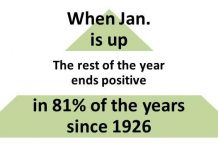Eddie Chloe
Between Eddie, our Beagle-German Shepard mix, and Chloe, our Catahoula Leopard mix, it is Eddie—despite his sweet disposition and a 20-pound weight disadvantage—who is the alpha.
So if Eddie and Chloe were investment advisors, you might choose Eddie. After all, as the leader of the pack he must get dibs on all the good stuff, right? Yes, he does—but he’s also not fond of sharing and isn’t afraid to throw his weight around in order to keep what’s his. This bravado and every-dog-for himself attitude is not what you want in an investment advisor.
In a recent paper, Vanguard recommends a patient, disciplined approach that will help advisors boost their client’s net returns by about 3% annually. While that may not sound like much, over ten years it compounds to about 25% more wealth. In Eddie and Chloe’s world, that’s a lot of biscuits.
Tools and tactics for achieving 3% in extra performance, or “alpha.” Vanguard’s estimate of potential value added by advisors—relative to an “Average” client experience, advised or not—is an approximation. How much of a lift you actually obtain depends on a number of factors including your investing behavior, tax rates, and portfolio composition.
Vanguard’s seven steps to investment alpha framework.
The extra performance advisors may create from following Vanguard’s best practices arrives not every year but over time and particularly when market duress or elation leads clients away from their long-term plans. The steps are summarized as follows:
- Asset allocation. Aligning your mix of cash, bonds, and stocks with your objectives, risk tolerance, cash-flows, and unique situation not only determines long-term expected performance but sets the foundation for everything else. Don’t skip this step. A well-conceived written investment plan helps put your emotions on a leash when markets go crazy.
- Cost-effective implementation. Annual fund expenses, trading costs, taxes, and advisor fees may seem insignificant, but over time they add up. Moving from average-cost funds to low-cost, passively managed funds (e.g., index funds) can boost performance by as much as 0.45% in a stock-heavy portfolio and 0.36% in a bond-heavy portfolio. Such funds are the bane of Wall Street’s marketing machine, which wants you to think their products and services have the nutrition of Science Diet when in reality they are more like Gaines-Burgers, typically more hype than substance.
- Rebalancing. This counter-intuitive tactic mandates maintaining your planned allocation by purchasing the worst-performing investments and selling the best-performing investments. When markets are fluctuating sharply performing these transactions can be as difficult as successfully commanding Eddie and Chloe “down” or “sit” when a visitor arrives at the house. We review the practice in Rebalancing during “traumatic market events”—the whole story or half the story?
- “Behavioral coaching.” Because it is difficult to separate our emotions from our investments, many investors abandon their plans, selling after rough patches or buying after markets have climbed and appear safe. This behavior can exact a heavy toll. By contrast, sticking to an allocation through thick and thin boosts performance by 1.5%. This extra performance is not achieved every year but comes when markets fluctuate sharply. When it does, it is one ginormous biscuit.
- Asset location. Placing highly taxed investments inside tax-deferred accounts (e.g., IRA, 401(k), 403(b)) and tax-efficient assets in your taxable accounts results in savings estimated up to 0.75%. If the majority of your investments are in one account, such as your 401(k), however, then the savings are minimal. See our post Asset Location, where investments are placed, can reduce taxes.
- Spending strategy (withdrawal order). Taxes on withdrawals from either your retirement accounts (e.g., 401(k) traditional IRA) or taxable brokerage and savings accounts can impact performance by as much as 0.75%. As Eddie and Chloe live bowl-to-bowl and biscuit-to-biscuit, they cannot deploy this type of strategy.
- Total-return versus income investing. With interest rates so low, many investors turn to higher yielding investments such as longer-maturity bonds, high-yield bonds, and high-dividend stocks and funds. While income rises, it does so at the risk of capital loss, greater fluctuation, and reduced diversification. The alternative is to use both capital appreciation and yield for cash distributions. This more granular, targeted view of your spending and income can reduce taxes and risk and potentially fully offset an advisor’s fee.
Adding alpha is no easy feat.
Take it from Bob Litterman, a former Goldman Sachs partner, in his letter to investors, Beyond Active Alpha:
Alpha is hard to come by. Every day, investors scour the markets searching for the road less traveled, hoping to capitalize on inefficiencies before other market participants can do the same. . . . Undoubtedly, in the years ahead, it will become even more difficult to outperform the passive market portfolio.
We could not agree more. So, in your search for alpha, don’t miss the tools and tactics that rely not upon outsmarting the market but instead on using an overall strategy, tax awareness, and your own behavior to full advantage. Having a guide to not only develop a plan with you but keep it on track can pay off. If you are interested in what value this approach might bring to your financial life, call or email for a complimentary review. In this dog-eat-dog world, our goal is to put you ahead of the pack.
This article is distributed for educational purposes and should not be considered investment, financial, or tax advice. Investment decisions should be based on your personal financial situation. Statements of future expectations, estimates or projections, and other forward-looking statements are based on available information believed to be reliable, but the accuracy of such information cannot be guaranteed. These statements are based on assumptions that may involve known and unknown risks and uncertainties. Past performance is not indicative of future results and no representation is made that the stated results will be replicated. Indexes are not available for direct investment. Their performance does not reflect the expenses associated with the management of an actual portfolio. Copyright © 2014, Granite Hill Capital Management, LLC.
Links to third-party websites are provided as a convenience and do not imply an affiliation, endorsement, approval, verification or monitoring by Granite Hill Capital Management, LLC of any information contained therein.
This blog entry is distributed for educational purposes and should not be considered investment, financial, or tax advice. Investment decisions should be based on your personal financial situation. Statements of future expectations, estimates or projections, and other forward-looking statements are based on available information believed to be reliable, but the accuracy of such information cannot be guaranteed. These statements are based on assumptions that may involve known and unknown risks and uncertainties. Past performance is not indicative of future results and no representation is made that any stated results will be replicated. Indexes are not available for direct investment. Their performance does not reflect the expenses associated with the management of an actual portfolio.
Links to third-party websites are provided as a convenience and do not imply an affiliation, endorsement, approval, verification or monitoring by Granite Hill Capital Management, LLC of any information contained therein. The terms, conditions and privacy policy of linked third-party sites may differ from those of this website.





